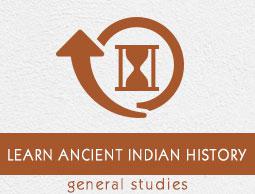Varna and Ashrama systems continued to govern the society.
The society consisted of four Varnas, namely −
Brahman,
Kshatriya,
Vaishya, and
Sudra.
Dharmasastras described the duties, status, and occupations of all the four Varnas.
Over a period of time, there was great increase in the number of mixed Jatis (castes).
Manusmriti defines the origin of the numerous mixed (sankara) Varnas.
Anuloma was the marriage between the male of higher Varna and the female of lower Varna.
Pratiloma was the marriage between the male of lower Varna and the female of higher Varna.
The social status of a person born of Anuloma was higher than Partiloma and they followed their father's occupation.
According to the Buddhist texts, mixed castes resulted from organizations like guilds of people following different arts and crafts.
The Buddhist texts described that a Kshatriya working successively as a potter, basket-maker, reed-worker, garland-maker, and cook. Setthi (Vaisya) working as a tailor and a potter without loss of prestige in both cases.
Kshatriyas of the Sakya and Koliya clans cultivated their fields.
The Vasettha Sutta refers to Brahmans working as cultivators, craftsmen, messengers, and landlords.
The Jatakas mentioned that Brahman pursuing tillage, tending cattle, trade, hunting, carpentry, weaving, policing of caravans, archery, driving of carriages, and even snake charming.
Jatakas story tells that a Brahman peasant as a supremely pious man and even a Bodhisattva.
The gradual absorption of foreigners like Indo-Greek, Sakas, Yavanas, Kushanas, and Parthians into the Indian society was the most important development of this period.
The life of an individual man was divided into four stages. The stages are called as Ashramas.
The joint family system was the main characteristics of the society.
The family was considered as the unit of the social system and not the individual.
Obedience to parents and elders was held as the highest duty for the children.
Marriage between the same Jatis was also preferred though intermarriage between different Jatis was prevalent.
The marriage in the same ‘gotra’ and ‘pravara’ is restricted.
Dharmasastras explained eight forms of marriage, namely −
Brahma Vivah,
Daiva Vivah,
Arsha Vivah,
Prajapatya Vivah,
Asura Vivah,
Gandharva Vivah,
Rakshasa Vivah, and
Paisacha Vivah.
Among all these eight (as discussed above), Paisacha Vivah is condemned by all the Dharmasatras.
Ideal marriage is one in which the father and guardian of the girls selected the bridegroom on an account of his qualifications.
The women hold an honorable position in the society and household.
Two classes of women students are mentioned as −
Women not only attained good education, but also received training in fine arts like music, dancing, and painting.
Dharmasastras described that in the family property, all the sons had equal share, but a large number of Dharmasastras rejected the right of women to inherit.
Yajnavalkya lays down a list of priority in inheritance, which places the sequences as son, wife, and daughter.
The right of a wife to inherit if no sons were living, has been accepted by most of the ancient Indian authorities.
Women were allowed to have some personal property known as Stree-dhana in the form of jewelry, clothing, etc.
The Arthashastra mentioned that a woman can own money up to 2,000 silver panas and amount above this could be held by her husband in trust on her behalf.


